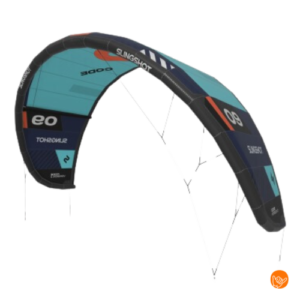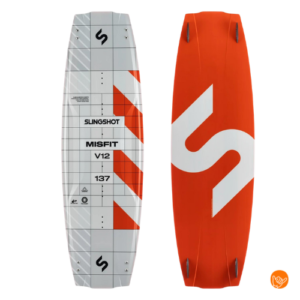The best time for a kitesurfing vacation depends on your desired destination and wind preferences. In general, April through October offer excellent conditions in Europe, while tropical destinations are often suitable year-round. Wind strength, temperature and local seasonal patterns determine when each location offers optimal kitesurfing conditions for a successful vacation.
What seasons offer the best wind conditions for kitesurfing?
The thermal winds in summer and consistent trade winds in tropical areas provide the most reliable kitesurfing conditions. In Europe, May to September are ideal because of stable wind patterns and warm temperatures, while winter months offer better conditions in subtropical destinations such as the Canary Islands or Egypt.
Summer kitesurfing in Europe brings benefits such as long days, warm air and water temperatures, and predictable thermal winds. Sea-land breezes provide consistent afternoon winds of 15-25 knots. Disadvantages include busier beaches, higher prices, and sometimes too-light winds during heat waves.
Winter kitesurfing requires a wetsuit but often offers more powerful winds due to storm fronts. Destinations such as Tarifa, the Canary Islands and Egypt benefit from strong winter trade winds. Benefits include fewer crowds, lower accommodation prices and consistently strong winds. Disadvantages include shorter days and colder conditions in northern areas.
Geographic differences play a crucial role. Mediterranean destinations have their peak season in summer, Atlantic locations such as Portugal and Morocco are excellent in spring and fall, while tropical destinations often have two seasons with optimal wind conditions.
How does weather affect your kitesurfing experience during a vacation?
Wind strength and direction directly determine if you can kitesurf and what kite size you need. Ideal conditions are between 12-25 knots with onshore or side-shore winds. Temperature affects your comfort and wetsuit choice, while precipitation can interrupt sessions but rarely prevents them completely.
Wind strength below 12 knots makes kitesurfing challenging for beginners and requires large kites. Above 30 knots becomes dangerous for inexperienced kitesurfers. Wind direction is crucial for safety - offshore wind can pull you out to sea, while onshore wind brings you back to the beach but causes choppy water.
Water temperature determines your wetsuit choice. Above 20°C you can often suffice with a shorty or even lycra, while below 15°C a thick wetsuit is necessary. To put together your kitegear it is important to know local conditions well. Air temperature affects your comfort between sessions and the choice of neoprene accessories.
Rain need not be a problem if there is sufficient wind, but thunderstorms make kitesurfing life-threatening because of lightning strikes. Strong currents, high waves and changing wind directions increase the risk and require more experience to kitesurf safely.
What are the most popular kitesurfing destinations by season?
Europe's top destinations such as Tarifa, Fuerteventura and Paros peaks between May and September. Tropical locations such as Brazil, Vietnam and the Philippines offer excellent conditions during their dry seasons. Egypt and the Red Sea are perfect for winter vacations from November to March.
Spring (March-May) is ideal for Egypt, Morocco and the southern Canary Islands. Temperatures are pleasant, winds reliable and prices still reasonable. Tarifa begins to get good, while tropical destinations conclude their dry season.
Summer (June-August) is the high point for European destinations. Greece, Turkey, France and Spain offer excellent conditions. Brazil has its wind season, while Asian destinations such as Vietnam and the Philippines are less suitable because of the rainy season.
Autumn (September-November) still offers good European conditions with fewer crowds. Egypt becomes interesting again, Cape Verde starts its season and Brazil reaches top form. This is often the best time for advanced surfers seeking strong, consistent winds.
Winter (December-February) is perfect for exotic destinations. Egypt, Cape Verde, Brazil and Asian locations such as Sri Lanka and India offer warm weather and strong winds while Europe is cold and unpredictable.
When is the best time to book kitesurfing vacation for the best deals?
Early booking (3-6 months ahead) often yields the best prices, especially for popular destinations during peak season. Last-minute deals can occur but are risky for specific dates. Shoulder season offers the best balance of weather, prices and availability for your kitesurfing vacation.
Book European summer destinations before March to get the best accommodation prices. Flights are often cheaper if you leave Tuesday, Wednesday or Saturday. Avoid school vacations and national holidays for significantly lower prices.
Tropical winter destinations are best booked in August or September. Although this seems early, popular resorts and kit schools are quickly booked up. If you wait until October or November, you will often pay 30-50% more for the same accommodation.
Flexibility in travel dates can save hundreds of dollars. Use fare comparison sites, set price alerts and consider alternative airports. Package deals are sometimes more economical than separate bookings, especially with specialized kitesurfing travel companies that offer service for travelers offering.
Shoulder season (April-May and September-October in Europe) offers excellent winds with lower prices. You avoid the crowds, get better service and often pay 40% less than during peak season.
How do you plan a kitesurfing vacation around unpredictable weather conditions?
Flexible scheduling with customizable bookings and multiple backup activities helps you make the most of changing weather conditions. Choose destinations with diverse kitespots, book accommodation with free cancellation and plan alternative activities for windless days during your kitesurfing vacation.
Book accommodation with flexible cancellation policies, even if it costs a little more. Many hotels and apartments offer free cancellation up to 24-48 hours in advance. This gives you the option to move if weather forecasts turn out badly.
Plan backup activities that make the area interesting without wind. Think surfing, diving, culture, hiking or local sightseeing. Destinations such as Fuerteventura, Morocco and Greece offer many alternatives for windless days.
Travel insurance with weather coverage can reimburse costs if extreme weather disrupts your vacation. Some policies cover additional accommodation costs if your return is delayed due to storms or other weather conditions.
Monitor weather forecasts starting two weeks before departure with reliable sources such as Windfinder, Windguru and local meteorological services. Have a plan B ready with alternative destinations within reasonable travel distance if the weather is disappointing. For specific questions about weather conditions, you can always contact with experts.
A successful kitesurfing vacation requires careful planning that considers seasonal patterns, weather conditions and booking strategies. By staying flexible and having backup plans, you can get the most out of your kitesurfing experience no matter what the weather brings. The investment in proper preparation and timing ensures unforgettable sessions on the water.




























